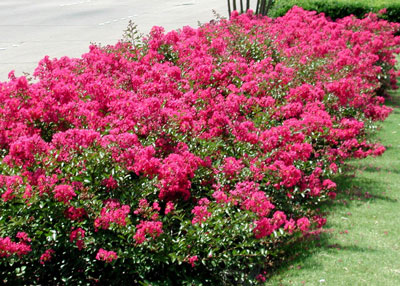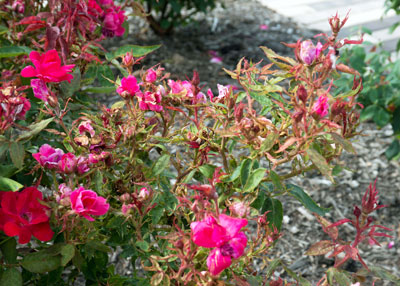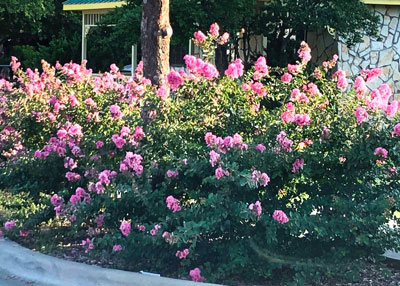Dwarf crape myrtles rescue us

Rose rosette virus has been around for decades, but it’s only been in the past 10 or 12 years that it’s become so bad in parts of Texas, notably DFW.

When RRV hits, plants are highly disfigured, stunted and eventually dead, and there’s nothing we can do to prevent or cure it. We’re told we must remove afflicted roses immediately. To that end, I have left important information archived on my website for several years. Click here to see it.
Texas A&M is conducting a great deal of research on finding solutions to rose rosette virus, but until they do we homeowners are faced with finding substitutes to fill those now-empty beds.
Of course, nothing else looks or perfumes like a rose, so we start from a position of sadness. But since we’re gardeners, we remain optimistic. Right?

Annuals and perennials are obviously options. But many of us would prefer a woody plant that would provide us color several times in the spring, summer and fall, just as our beloved roses did. What plant would do that?

Dwarf crape myrtles!
Dwarf crape myrtles and roses have many similarities.
• Both grow to 3 to 5 ft. tall and wide.
• Colors are acceptably similar.
• Both plants bloom best in full sun.
• Both plants rebloom two or three times during the year. Roses: spring and fall. Crape myrtles: on and off from late spring through early fall.
• Both plants are bare (or nearly so) in the winter.

My favorites of the dwarf crape myrtles have always been the Petite series introduced by Monrovia Nursery clear back in the early ‘60s. They can be pruned almost like perennials to half their height each winter and allowed to come back strongly each spring.
The Petite series comes in shades of purple, orchid, pink, red, deep red and white. If they don’t handle them regularly, your local independent nursery can order them in for you.
